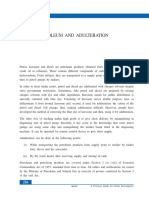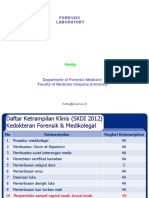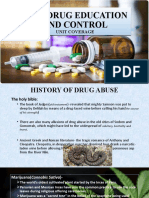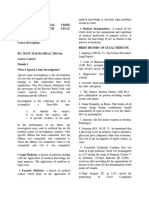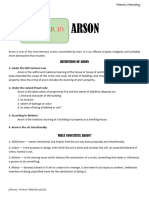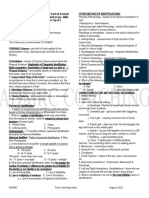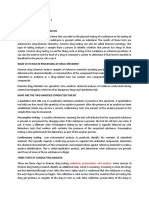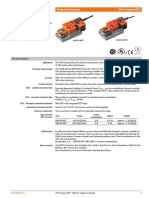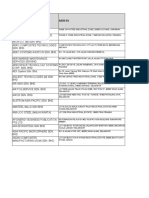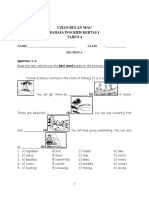0% found this document useful (0 votes)
272 views31 pagesNotes - Forensic Drug Analysis
The document discusses analytical techniques for identifying drugs in specimens. It describes qualitative and quantitative analysis methods, including physical and colorimetric tests. Specific color tests like the Marquis test and Duquenois-Levine test are able to identify drug classes. Confirmatory tests like thin layer chromatography, spectroscopy, and gas chromatography-mass spectrometry can precisely identify drug compounds. The document also covers drug metabolism, testing windows, specimen validity testing to detect tampering, and the components of a laboratory report.
Uploaded by
Jane Marry Magno MolinaCopyright
© © All Rights Reserved
We take content rights seriously. If you suspect this is your content, claim it here.
Available Formats
Download as PDF, TXT or read online on Scribd
0% found this document useful (0 votes)
272 views31 pagesNotes - Forensic Drug Analysis
The document discusses analytical techniques for identifying drugs in specimens. It describes qualitative and quantitative analysis methods, including physical and colorimetric tests. Specific color tests like the Marquis test and Duquenois-Levine test are able to identify drug classes. Confirmatory tests like thin layer chromatography, spectroscopy, and gas chromatography-mass spectrometry can precisely identify drug compounds. The document also covers drug metabolism, testing windows, specimen validity testing to detect tampering, and the components of a laboratory report.
Uploaded by
Jane Marry Magno MolinaCopyright
© © All Rights Reserved
We take content rights seriously. If you suspect this is your content, claim it here.
Available Formats
Download as PDF, TXT or read online on Scribd
/ 31












